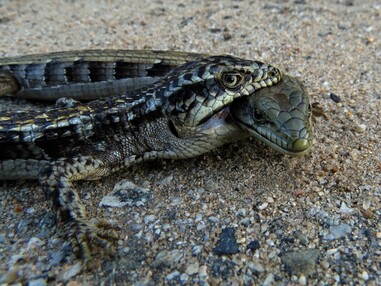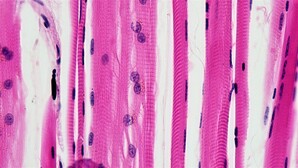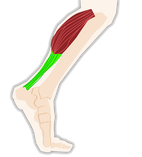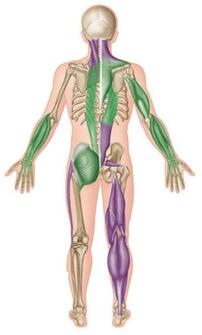|
10/7/2020 If you are a science teacher, you may be on the lookout for new ways to interest students in topics related to your course. I recently happened upon an article in the NY Times that could provide a segue to teaching about cells, muscles, body systems, or ecology, among others. Using Strange Mating Behavior To Teach Reproduction It seems that southern alligator lizards in Los Angeles have a reproductive strategy whereby the male grips the females’ head in his mouth. This didn’t seem so usual to me because I have witnessed other animals with a similar oral fixation.  Check out these…..  .......and these.......  ..........and these........  ............and these.  Why stop at the head, when you think about it?
 The mating behavior, which is also sometimes observed with lizard threesomes, occurs during a week-long mating season, correlated with temperatures and increasing in wet years. The coupling head-biters expose themselves to predators, cars, and the elements, but seem compelled to take those risks. Engage studets with Photos or Video Show a video or photos of this behavior to your class and discuss functions of specific cells and their energy requirements. Or ask about the involvement of other body systems working with the lizards’ muscular system to achieve this action. Even topics such as global climate change can relate to this and the resulting effects on alligator lizard populations. These are all ways to generate student interest in science study, not to mention the obvious biology topic of reproduction. Herpetologists hypothesize that the head-biting might be a male effort to guard his partner or a female effort to assess a male’s strength. It appears that the males hold with some degree of force, as the female’s head is somewhat squashed. Transitioning From One Subject To The Next Ordinary vertebrate muscles can’t exert significant force over such a long period. Upon examination of the southern alligator lizard's jaw, some researchers found a special kind of muscle fiber that may account for the lizard's ability to engage in such a long hold. Certainly this piece of information would be a great prompt for students to learn about myofibrils, actin, and myosin.  Most vertebrate’s skeletal muscles are made up of twitch fibers, which contract quickly. Some of these fibers are fast and powerful, while others are slower and more resistant to fatigue. The human calf, for example, has two muscles: the gastrocnemius, full of fast twitch fibers, lets you bound up a flight of stairs, while the soleus, mostly slow twitch fibers, keeps us standing.  Other muscle cells, called tonic fibers, contract more gradually and take far longer to tire out. These have been found in human vocal cords, in fish, in the legs and necks of some turtles and in the arms of male frogs, who also hold their mates for a long time. Researchers found that, when alligator lizard’s jaw muscles tense, they fatigue slightly and then tense again even harder. Molecular analysis confirmed the presence of tonic fibers. But some of the results remain confusing. The sustained bite is also pretty forceful, which is rare with tonic muscles. And male and female lizards both had these fibers, even though it’s unclear when the females might use them.  Sex differences between lizards might become more pronounced during mating season. Such changes are observed during frog reproduction time, when males of some species suddenly develop “Popeye arms”.  Unusual little tidbits like this factoid about alligator lizards are more than “click-bait” on social media. Use them to be “interest-bait” for your science students!
0 Comments
Leave a Reply. |
AuthorGertrude Katz has spent over 30 years teaching K-12 public school students all major subjects. She has taught biology and education at the college level. The majority of her career has been spent instructing biology at the secondary level. Categories
All
|

 RSS Feed
RSS Feed